Liechtenstein
Liechtenstein
Capital city description
Vaduz is the capital city of Liechtenstein. It is home to the Vaduz Castle, the home of the ruling princely family. The castle is located on a hilltop providing a view of the entire city below. The city's remarkable architecture is also displayed in landmarks such as the Cathedral of St. Florin, Government House, City Hall, the National Art Gallery, and the National Museum.
The Liechtenstein Museum of Art is one of the most fantastic places in the city. The museum is housed in a beautiful ebony building and features changing modern art exhibitions.
Climate
Liechtenstein has a temperate alpine climate, wet summers, and mild winters. In January, average monthly temperatures range from -1 degrees Celsius (28° Fahrenheit) to 21 degrees Celsius (69° Fahrenheit) July.
The average annual precipitation/rainfall is about 1,000 mm (39.3 inches) and is relatively evenly distributed over the entire year. A warm, dry southerly wind often changes the climate.
Languages spoken
Liechtenstein's official and national language is standard German, spoken by a majority of the population.
Fun/Fascinating Facts
- The world's sixth smallest country, Liechtenstein, is the largest exporter of false teeth.
- All Liechtenstein residents are invited to a party during Liechtenstein's national day, Staatsfeiertag, held annually, on August 15. The Prince himself hosts the party in his beautiful garden of Vaduz Castle.
- Prince Hans-Adam II, the Prince of Liechtenstein, is one of the 500 wealthiest people worldwide, and he is among the richest of all royal families.
- Liechtenstein has a meager crime rate, making it a safe country to visit for all travelers.
- Liechtenstein appears like a fairytale land with mountains, valleys, rivers, and castles. The beauty of the land lures many visitors to the country.
Unique Customs/Traditions
- Liechtenstein traditionally celebrates the unique ceremonial cattle drive. The cattle were driven down off the pastures from high in the Alps. The cows are intricately decorated and judged as their cowbells ring out loudly on their pass through the villages.
- In Liechtenstein, the tradition of selecting grapes to make wine is known as "Wimmlete"; a term also refers to the grape harvest itself. On the day of the grape harvest, church bells would ring, and friends and relatives would hurry to the vineyard owned by "their" winemaker to help. In return, they would receive food and wine at the end of the day to recognize their hard work.
- Liechtenstein's old wedding customs include decorating the door frames of the couple's home with garlands and organizing a mock kidnapping of the bride.
- Liechtenstein's national day, the Prince's Birthday is celebrated on 15 August, wherein celebrations in the capital city of Vaduz include an open house at the prince's home and castle. Fireworks, street dancing, special foods, and speeches are events during Prince's Birthday.
Popular universities
| Name | Description | |
|---|---|---|
| University of Liechtenstein (Universität Liechtenstein) | The University of Liechtenstein (Universität Liechtenstein) is a public university located in the suburban setting of the medium town of Vaduz. The university focuses on architecture and business economics (entrepreneurship, finance, information systems, business law). It was founded in 1961. | |
| International Academy of Philosophy (Internationale Akademie für Philosophie) | International Academy of Philosophy (Internationale Akademie für Philosophie) is a non-profit private higher education institution located in the urban setting of the medium town of Bendern. This institution also has branch campuses in the following locations: Santiago de Chile, Granada. International Academy of Philosophy offers courses and programs leading to officially recognized higher education degrees such as doctorate degrees in several areas of study. | |
| University for Human Sciences in the Principality of Liechtenstein (Private Universität im fürstentum Liechtenstein) | University for Human Sciences in the Principality of Liechtenstein (Private Universität im fürstentum Liechtenstein) is a non-profit private higher education institution located in the suburban setting of the medium town Triesen. University for Human Sciences in the Principality of Liechtenstein offers courses and programs leading to officially recognized higher education degrees such as doctorate degrees in several areas of study. | |
Festivals & Events
.jpg)
Liechtenstein Operettas i
Date: January to March
Liechtenstein Operettas is a three-month opera celebration held either in Balzers or Vaduz and typically lasts from January through the middle of March.
Almost 10,000 visitors enjoy the performances in Balzers and Vaduz annually, with the two locations alternating on an annual basis since 1977.
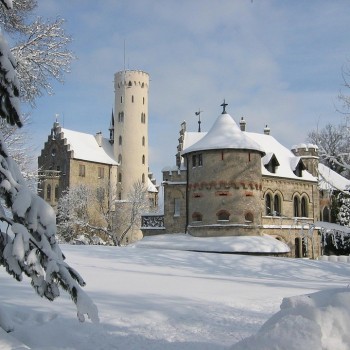
Liechtenstein National Day
Date: August 15
Staatsfeiertag, or National Day, is a memorable public holiday in Liechtenstein and celebrated on August 15th. It was first declared as a national holiday by the government of the Principality of Liechtenstein on August 15th, 1940. The celebration has a double meaning in Liechtenstein as August 15th was already a public holiday to mark the Feast of the Assumption and to celebrate the birthday of Prince Franz Josef II, who was born on August 16th, 1906.
Every year on National Day, there is a special celebration at Vaduz Castle. Royal and elected leaders of Liechtenstein give speeches, and a festive reception is held in the castle’s beautiful garden. Many of them come from neighboring and even far-off countries to attend the events. There are also parades, funfair, and various cultural activities. The celebration ends with an impressive fireworks display.
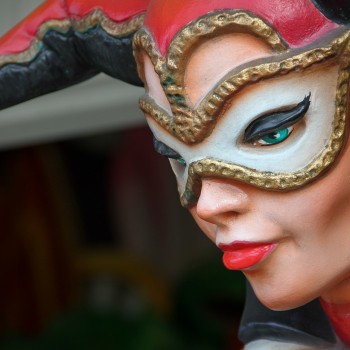
Carnival Tuesday
Date: February
Carnival Tuesday, also known as Mardi Gras or Fat Tuesday, takes place on the day before Ash Wednesday, the first day of Lent, the 40 day period that precedes Easter.
Colorful masks, elaborate costumes, parades, and large crowds are all part of the Carnival festivities in Liechtenstein.
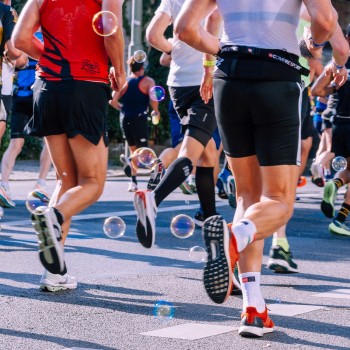
LGT Alpine Marathon
Date: June
The annual LGT Alpine Marathon is one of Liechtenstein's most exciting sporting events. The LGT Alpin Marathon in Liechtenstein is the only marathon and runs from Bendern after Malbun.
The Marathon has been held since June 2000. Runners from around Europe and the UK flock to Bendern for 42 km of excitement. Most of the course is at an altitude of about 5900 feet.
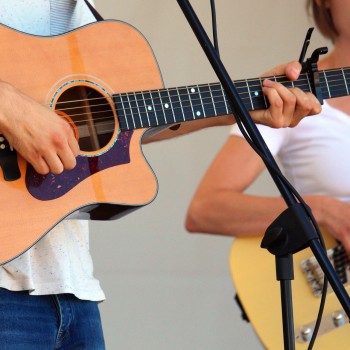
LiGiTa Guitar festival
Date: July
Liechtenstein LiGiTa Guitar festival is a weeklong festival held in July that brings the best guitar players from around the country and Europe to Eschen.
The festival hosts an international competition attracting most visitors from all over Europe. There are also plenty of workshops and concerts.

FL1.LIFE Festival
Date: July
The FL1.LIFE Festival is an annual music festival in July at the SAL event center in Schaan. The festival features top international artists.
International stars such as Seal and Sunrise Avenue have performed in recent years. Music events for younger and young-at-heart audiences coincide in the large and small hall of the Lindenhof.
Attractions / Top Sights
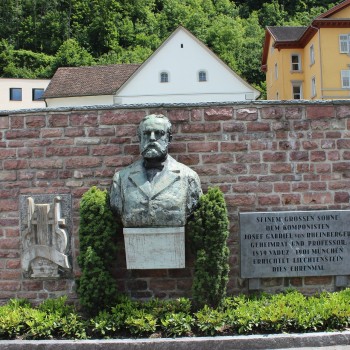
Vaduz
When to visit: May to September
Vaduz is a beautiful principality of Liechtenstein, the smallest capital of Europe; however, it is one of the most panoramic cities in Europe and is home to the many tourists attractions in Liechtenstein.
Vaduz has a lot of things to offer, including shopping and dining, as well as exploring the city's historic Städtle, or "small town," with its many unique attractions. One of the most visited attractions here is the country's parliament building, or "Landtag," located near the banks of the River Rhine in Peter-Kaiser-Platz.
.jpg)
Gutenberg castle
When to visit: Between May and October
The Gutenberg castle is one of the most beautiful attractions in Liechtenstein; located at the southernmost part of the principality, the majestic Gutenberg castle is entirely free to visit.
Highlights of the castle include the chapel and rose garden, along with the many fun cultural events and festivals. These include open-air concerts and outdoor theatrical performances.
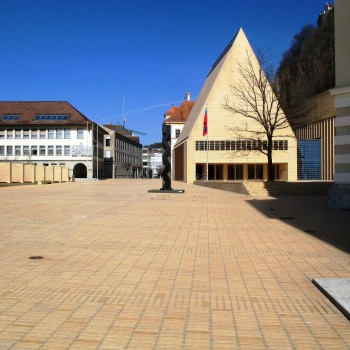
Treasure Chamber of the Principality of Liechtenstein
When to visit: All year
As the name suggests, The Treasure Chamber of the Principality of Liechtenstein exhibits unique treasures and rich royal heritage; these include historical weapons, hunting knives, art collections, and ceremonial gifts from kings and emperors Frederick the Great and Emperor Joseph II. There's an exciting collection of moon rocks given to the country to recognize the role of its manufacturing base in NASA's spacecraft.
Also on display are objects from the collection of Adulf Peter Goop, who gifted his collection to the State of Liechtenstein in 2010. These include the Apple Blossom Egg and other jewel-studded golden ornamental eggs from Fabergé and other Russian jewelers. And of course, The royal coronet, or "ducal hat" commissioned by Prince Karl of Liechtenstein from the jeweler Daniel de Briers, is adorned with 26 pearls, 30 large diamonds, and 99 smaller diamonds 16 rubies.

Kunstmuseum Liechtenstein
When to visit: May to September
Kunstmuseum Liechtenstein (Liechtenstein Museum of Fine Arts ) displays many fine modern and contemporary artwork examples such as sculptures and works from the collection of the Prince of Liechtenstein. The collection symbolizes the more significant part of the state's art collection and, as such, is an essential and integral part of the public image of Liechtenstein.
The collection of international modern and contemporary art covers the period from the 19th century to the present. It features abstract, minimal, and conceptual art, Arte Povera, symbolism, futurism, surrealism, the personal mythologies of Joseph Beuys, and much more.
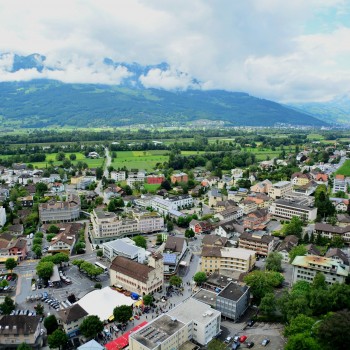
Liechtenstein National Museum
The beautiful small towns of Nendeln and Eschen are the principal communities of the lowland area of Liechtenstein. Nendeln is a famous place for Schadler pottery, and it houses the country’s oldest workshop, which was started in 1836, renowned for its stoneware crockery and traditional tiled stoves.
While Eschen boasts its central attraction, Pfrundhaus, a 14th-century building used to display local art, it is also home to the stunning Holy Cross Chapel.


























